Mark Gresham | 3 SEP 2025
Born in 1829 in New Orleans, Louis Moreau Gottschalk was a child of America’s cultural crossroads. His mother, of French Creole descent, filled their home with European elegance, while his Jewish father, an English immigrant, brought a merchant’s pragmatism. As we explored last week, the city itself was already a crucible of sound — African drumming from Congo Square, Caribbean bamboulas, and the refined strains of French opera houses. Young Louis absorbed it all, his ear tuned to the polyphony of a nation still finding its voice. By the age of 11, he was performing Mozart and Liszt, but it was the rhythms of his hometown that would ultimately define his legacy.
Gottschalk’s early training took him to Paris at 13, where European audiences marveled at his talent—but the Paris Conservatoire barred him for being American, a rejection that fueled his resolve to prove his nation’s musical worth. He studied privately, dazzling salons with his virtuosity and charm. By 1845, he premiered works like Bamboula and Le Bananier, piano pieces alive with Creole melodies and African rhythms. These weren’t mere novelties; they were declarations of a new American aesthetic, embracing diversity long before the term became a cultural touchstone.
When Gottschalk returned to the United States in 1853, he arrived a sensation. His concerts, from New York to California, drew thousands, blending Chopin’s lyricism with the syncopated energy of New Orleans. Works like The Banjo (1854) mimicked the twang of America’s folk instrument, while Union (1862) stitched together “The Star-Spangled Banner,” “Yankee Doodle,” and “Hail Columbia” into a patriotic fantasia. Performed during the Civil War, Union was more than a crowd-pleaser—it was a plea for a fractured nation to find harmony.
Gottschalk’s patriotism wasn’t jingoistic. His travels across the Americas—Cuba, Puerto Rico, Brazil—infused his music with a Pan-American spirit, reflecting the New World’s shared dreams of freedom. His Grande Tarantelle (1859) and Cuban Contradances blended Creole and Latin rhythms, a borderless vision of American music. Yet his heart remained with his homeland. In 1861, he wrote, “I am American to the core, and my music must speak that truth.” A lesser-known gem, Night in the Tropics (1859), premiered in Havana, Cuba, was one of the earliest American orchestral works to fuse Creole and classical elements, foreshadowing the global influence American music would eventually exert.
Gottschalk was as much a performer as a creator, a rock star long before the term existed. He crisscrossed the U.S. by train, playing up to 80 concerts a year, often on rickety pianos in dusty halls. His charisma—described by one critic as “a smile that could light up a theater”—made him a cultural icon. He organized “monster concerts” with dozens of pianists, spectacles that anticipated large-scale piano ensemble performances of today. But beneath the showmanship was a serious artist: his compositions were technically demanding yet accessible, blending European forms with the vitality of American music. Pasquinade (1860) exemplifies this balance, a playful tour de force that evokes the atmosphere of a New Orleans street parade.
His life wasn’t without controversy. Gottschalk’s cosmopolitan outlook often clashed with America’s racial and cultural tensions. He performed for both Union and Confederate audiences, believing music could transcend politics and heal, but this drew criticism. His Creole identity was complex—rooted in a culture mixing European, African, and Caribbean influences, yet tied to a society grappling with slavery. These tensions shaped his life and work, revealing an artist navigating a deeply divided nation.
Tragically, Gottschalk’s life ended at 40 in 1869, during a tour in Brazil, likely from illness exacerbated by exhaustion. His death silenced a voice that might have shaped American music further, but his influence endured. Composers like Scott Joplin and Jelly Roll Morton echoed his Creole rhythms, while his patriotic works inspired later generations. Today, pianists like Cecile Licad and Jeremy Denk keep his music alive, proving its timelessness. ■

Read more by Mark Gresham.
RECENT POSTS
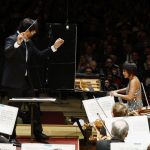 Domingo Hindoyan leads Boston Symphony in fearless Bernstein, Prokofiev, and Copland, pianist Yuja Wang solos with brilliance • 28 Oct 2025
Domingo Hindoyan leads Boston Symphony in fearless Bernstein, Prokofiev, and Copland, pianist Yuja Wang solos with brilliance • 28 Oct 2025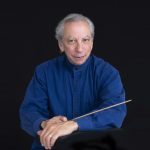 Conductor Arthur Fagen earns strong Italian press for Mozart’s ‘Don Giovanni’ in Jesi and Novara • 27 Oct 2025
Conductor Arthur Fagen earns strong Italian press for Mozart’s ‘Don Giovanni’ in Jesi and Novara • 27 Oct 2025
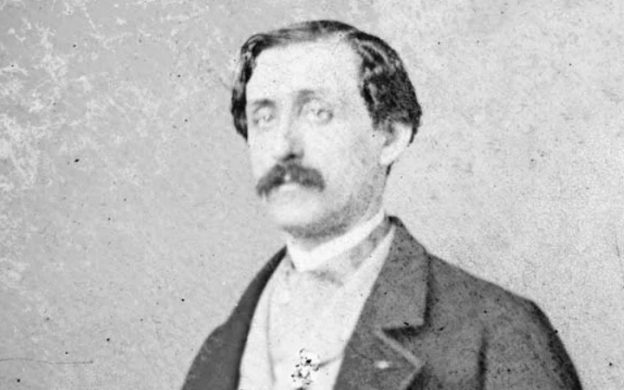

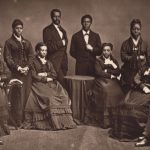
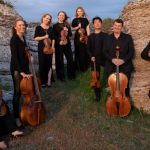
.png)